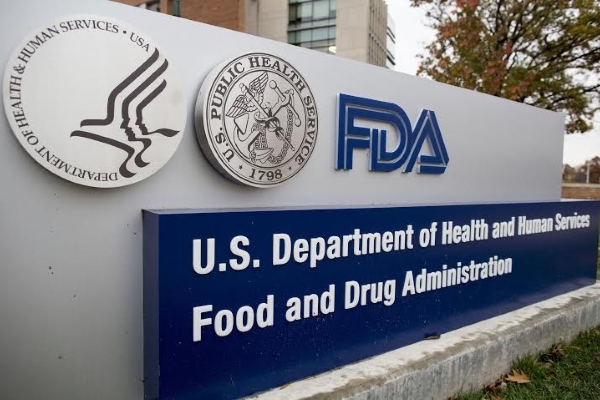
The FDA has laid out recommendations for the standardisation of transferring transaction information along the pharma supply chain under new track and trace legislation.
In draft guidance – titled Standardization of Data and Documentation Practices for Product Tracing – the FDA details the recommended standardisation of data, including transaction information about the product, the product’s transaction history and transaction statements.
The guidance also highlights the product tracing information that manufacturers, repackagers and wholesale distributors must provide.
The track and trace information are required under the new Drug Supply Chain Security Act (DSCSA). The legislation, which comes fully into force in 2023, requires an electronic, interoperable track and trace system to be introduced to monitor the distribution of drugs in the US to prevent counterfeit, contaminated and diverted drugs.
As part of the system, trading partners – from manufacturers through to pharmacies – are required to exchange certain transaction and product tracing information when pharmaceutical products change hands along the supply chain.
“This guidance is intended to assist trading partners in standardizing the data contained in the product tracing information that trading partners must provide, capture, and maintain under section 582 [of the Federal Food, Drug, and Cosmetic Act, which was added by the DSCSA],” the guidance says.
“This guidance is also intended to help trading partners understand the data elements that should be included in the product tracing information, particularly in situations where trading partners are permitted by law to provide other trading partners with product tracing information that omits certain elements that would otherwise be required. In addition, this guidance recommends documentation practices that trading partners can use to satisfy the product tracing requirements of section 582.”
The FDA said use of the recommendations would facilitate an “interoperable exchange” of transaction and product tracing information.
“Establishing a truly interoperable system requires setting standards and using consistent terms to ensure the data is captured and shared in a way that allows various systems involved in the supply chain – from manufacturers to pharmacies – to communicate with one another,” FDA commissioner Scott Gottlieb said in a statement, adding that the practices will impede “increasingly more sophisticated threats” to the drug supply chain.
“The new steps will reduce the risk of harmful drugs reaching patients by allowing us to identify and trace certain prescription drugs as they are distributed throughout the US,” he said.
According to the draft guidance, which is open for consultation, the transaction information that trading partners are required to exchange generally consists of 10 distinct elements of information, including: proprietary or established name of the product; strength and dosage form; national drug code number of the product (a three-segment number comprised of the labeller code, product code, and package code); container size (relating to the number of dosage forms i.e. tablets per container); number of containers in the transaction; product lot number; date of transaction; date of the shipment, if more than 24 hours after the date of the transaction; business name and address of the person from whom ownership is being transferred; business name and address of the person to whom ownership is being transferred.
The FDA recommended that the name of the product not be truncated in the transaction information and that abbreviations, symbols, or confusing dose designations not be used so as to avoid misinterpretation of the drug.
In large part, the transaction information should be the same and consistent along the supply chain, the guidance noted, although there are a few exceptions for repackaging of drugs.
The FDA also stated that the transaction information should remain separate from the transaction history (a compilation of the transaction information for each prior transaction of the product). The transaction history can be provided either as a “compilation” of transaction information documents or as a “single new document” based on the received documentation, the guidance said.
Meanwhile, each transaction requires a transaction statement, which claims that the entity transferring ownership: is authorised as required under the DSCSA; received the product from a person that is authorised as required under the DSCSA; received transaction information and a transaction statement from the prior owner of the product; did not knowingly ship a suspect or illegitimate product; had systems and processes in place to comply with verification requirements under section 582; did not knowingly provide false transaction information; and did not knowingly alter the transaction history.
The FDA notes that clerical errors and other discrepancies in product tracing information may occur, and recommended that any trading partner that identifies this “should resolve the error or discrepancy as quickly as possible”.
“If the error or discrepancy cannot be resolved and the product is determined to be a suspect or illegitimate product, trading partners must follow steps for verification of product, including, if applicable, quarantine and investigation,” the guidance recommended.
The draft guidance also clarifies the product tracing information that should be provided to subsequent purchasers in situations where a trading partner is permitted by law to provide product tracing information that omits certain elements.
These situations involve: direct purchases by a wholesale distributor, in addition to transactions by a trading partner that further sells product that was purchased from a wholesale distributor that conducted a direct purchase; drop shipments to a dispenser (distribution of product to the dispenser by a wholesale distributor that does not physically handle or store the product, but arranges for a manufacturer, a repackager, or another wholesale distributor to directly ship the product to a dispenser on its behalf); and transactions involving grandfathered products.
Repackagers that purchased product directly from the manufacturer must provide all of the elements for the product tracing information.
Meanwhile, the FDA has also released draft guidance looking at the definitions of suspect and illegitimate products for verification obligations.
©
SecuringIndustry.com





